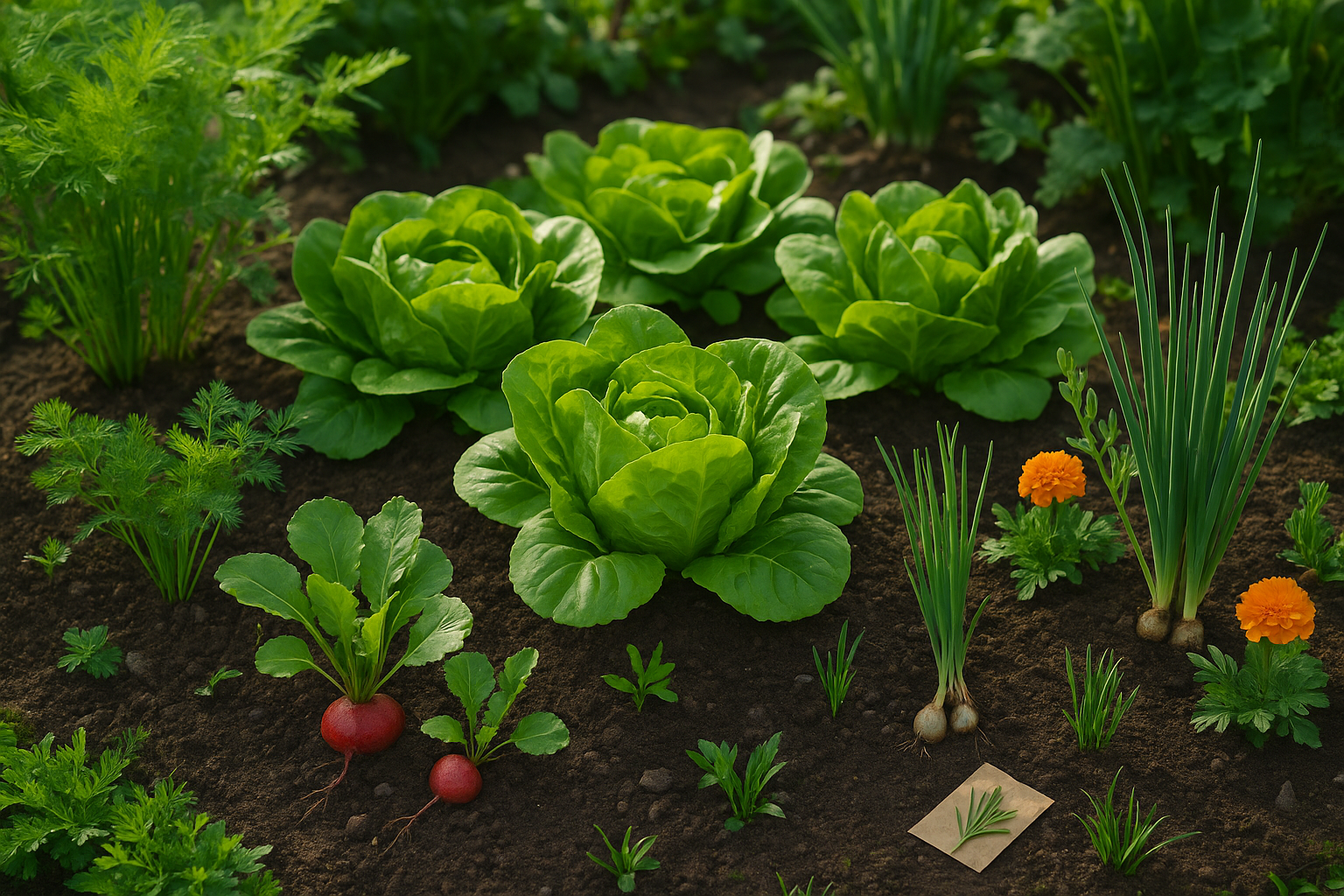Introduction
When planning your vegetable garden, understanding which plants not to grow near lettuce can make all the difference between a thriving crop and disappointing results. Companion planting is a simple, time-tested strategy where certain plants are grown together to help each other—improving growth, warding off pests, and making the most of available space. But just as some pairings are a match made in gardening heaven, others can spell trouble.
Lettuce, with its tender leaves and shallow roots, is particularly sensitive to the influence of its neighbors. Some plants compete aggressively for nutrients, water, or sunlight, leaving lettuce stunted or starved. Others might attract insects or diseases that quickly spread to your vulnerable greens.
With so many factors at play, it’s easy for even experienced gardeners to make mistakes. That’s why it’s crucial to know exactly which plants might harm your lettuce bed rather than help it. In this post, we’ll pinpoint the worst offenders—those “bad companions” you should absolutely avoid placing near lettuce. Whether you’re just starting your first raised bed or looking to boost your next harvest, these tips will help you sidestep common pitfalls and set your lettuce up for success from the start.
What Is Companion Planting for Lettuce?
Companion planting is a gardening technique where you grow different crops near each other to boost growth, repel pests, and improve yields. When it comes to lettuce, making smart companion choices is key for a thriving patch.
Lettuce is a flexible, fast-growing leafy green that appreciates partners like carrots, radishes, and onions. These root veggies loosen the soil beneath lettuce, helping the roots breathe, while onions naturally deter aphids and other pests. Herbs like dill and chives can also help fight off insects and add flavor to your garden mix.
But not all plant pairings are beneficial. Avoid placing lettuce near broccoli or other cabbage family relatives, as these heavy feeders compete for the same nutrients and can stunt lettuce growth. Peas, while often great companions in other beds, may encourage mildew and fungal issues for lettuce if planted too closely, especially in humid weather.
Careful neighbor selection is crucial—choose plants that provide light shade, since lettuce tends to bolt (go to seed) in hotter weather. For instance, taller tomatoes or sunflowers can offer helpful shade at just the right time of day.
Always rotate crops and avoid planting lettuce with the same companions season after season to ward off disease and pest buildup. By knowing which plants play well with lettuce and which to keep at a distance, you’ll enjoy healthier, tastier greens all season long.
How Lettuce Grows
Lettuce thrives when given the right balance of sunlight, water, and temperature. It prefers cool conditions, ideally between 60–70°F (15–21°C), with plenty of indirect sunlight—about 6–8 hours per day. While lettuce needs consistently moist soil, it doesn’t tolerate waterlogged roots, so good drainage is essential.
Its root system is quite shallow, often only reaching 6–12 inches deep, making it especially sensitive to fluctuations in soil moisture. This shallow root structure means lettuce can dry out quickly and limits its ability to access deeper soil nutrients. That’s why mulching around the base and watering regularly but lightly are important care steps.
However, the plant’s vulnerabilities don’t stop there. Lettuce is highly susceptible to pests like aphids, slugs, and snails, which can quickly ruin a crop if not managed carefully. Warm temperatures above 75°F (24°C) can trigger bolting, causing the plant to grow tall and flower, which turns the leaves bitter.
The risk of bolting and pest infestations can increase when lettuce is planted next to aggressive or incompatible vegetable neighbors. For example, pairing it with crops like onions or garlic, which release strong chemicals into the soil or attract pests that target lettuce, might stress the plant further.
In tight garden spaces, be mindful of companion planting. Stick to friendly options like carrots or radishes that don’t compete for shallow soil moisture, and avoid partners that magnify lettuce’s natural vulnerabilities.
Top Plants to Avoid Planting Near Lettuce
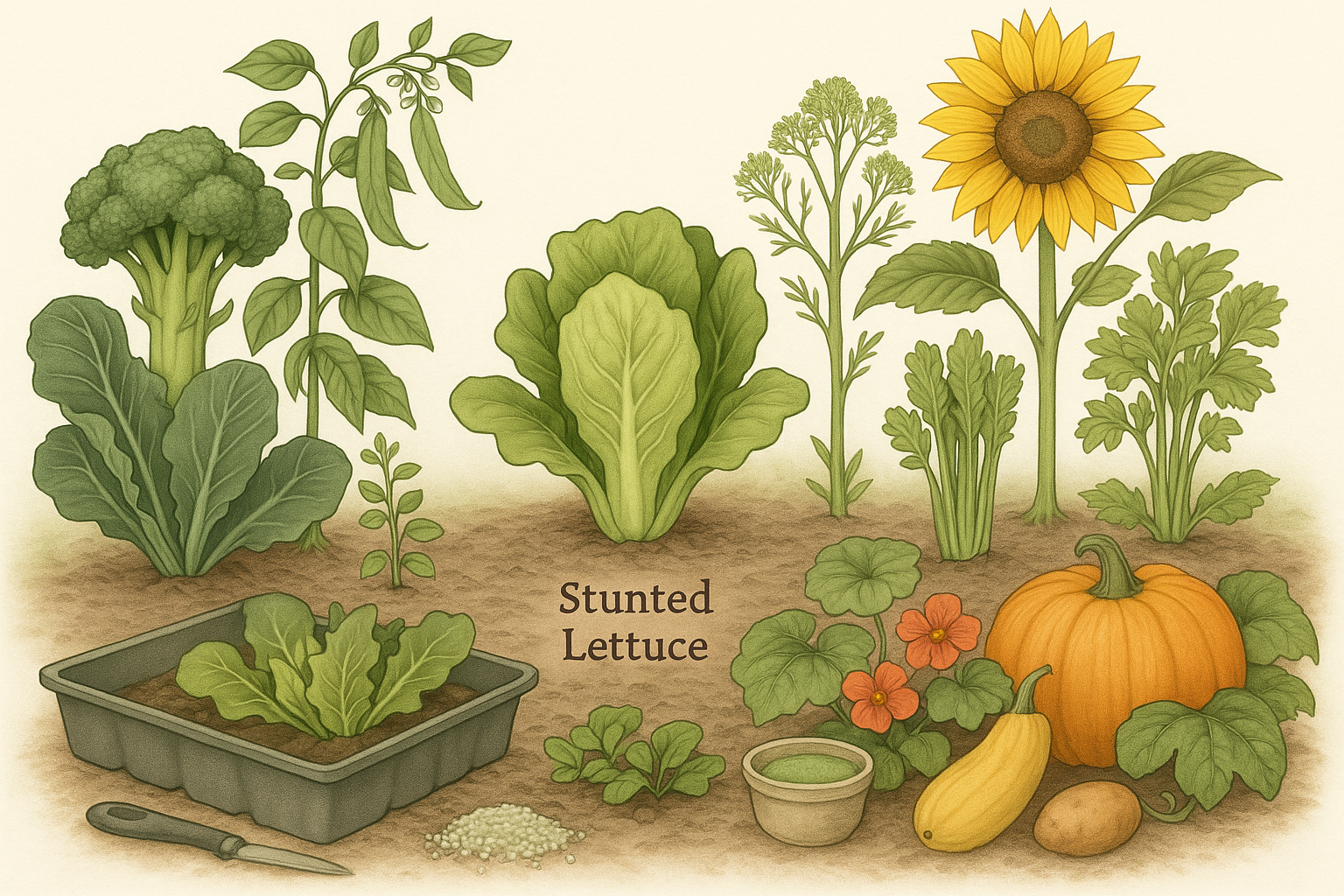
While lettuce is a popular staple for home gardens, choosing its neighbors wisely is crucial for a healthy crop. Certain plants can hinder lettuce growth or attract pests that target its tender leaves.
Brassicas like broccoli, cabbage, and cauliflower often compete for the same nutrients and space as lettuce, resulting in stunted growth for both crops. Fennel, known for its allelopathic properties, releases chemicals into the soil that can inhibit the germination and development of nearby lettuce. Pole beans, though helpful for some veggies, tend to tangle and shade out low-growing lettuce, depriving it of necessary sunlight.
Sunflowers, impressive as they are, also compete aggressively for nutrients and cast heavy shade, further stunting leafy greens. Celery can foster similar pest problems as lettuce, inviting aphids and leafminers that can quickly spread between rows. Nasturtiums, while often planted as a trap crop, can attract aphids in such numbers that an outbreak may overflow onto your lettuce if planted too close.
Pumpkins and squash, both vigorous sprawlers, not only monopolize ground space and soil nutrients but their dense foliage also creates conditions ripe for mildew and limits air circulation, increasing disease risks for sensitive lettuce varieties.
If you notice your lettuce leaves turning yellow, growing slowly, or being chewed by pests, it’s wise to check if any of these troublemakers are nearby. To manage these conflicts, try interplanting lettuce with more compatible herbs like dill or chamomile, and keep larger, aggressive crops at least a few feet away.
Rotate beds and provide physical barriers, such as small row covers, if planting in limited spaces. Pay attention to your garden’s microclimates, ensuring lettuce remains in areas with steady light but not the deep shade cast by sunflowers or climbing beans. By being mindful of what you plant near lettuce, you’ll give your greens the best chance to thrive while keeping pests and diseases at bay.
Why These Plants Don’t Mix with Lettuce
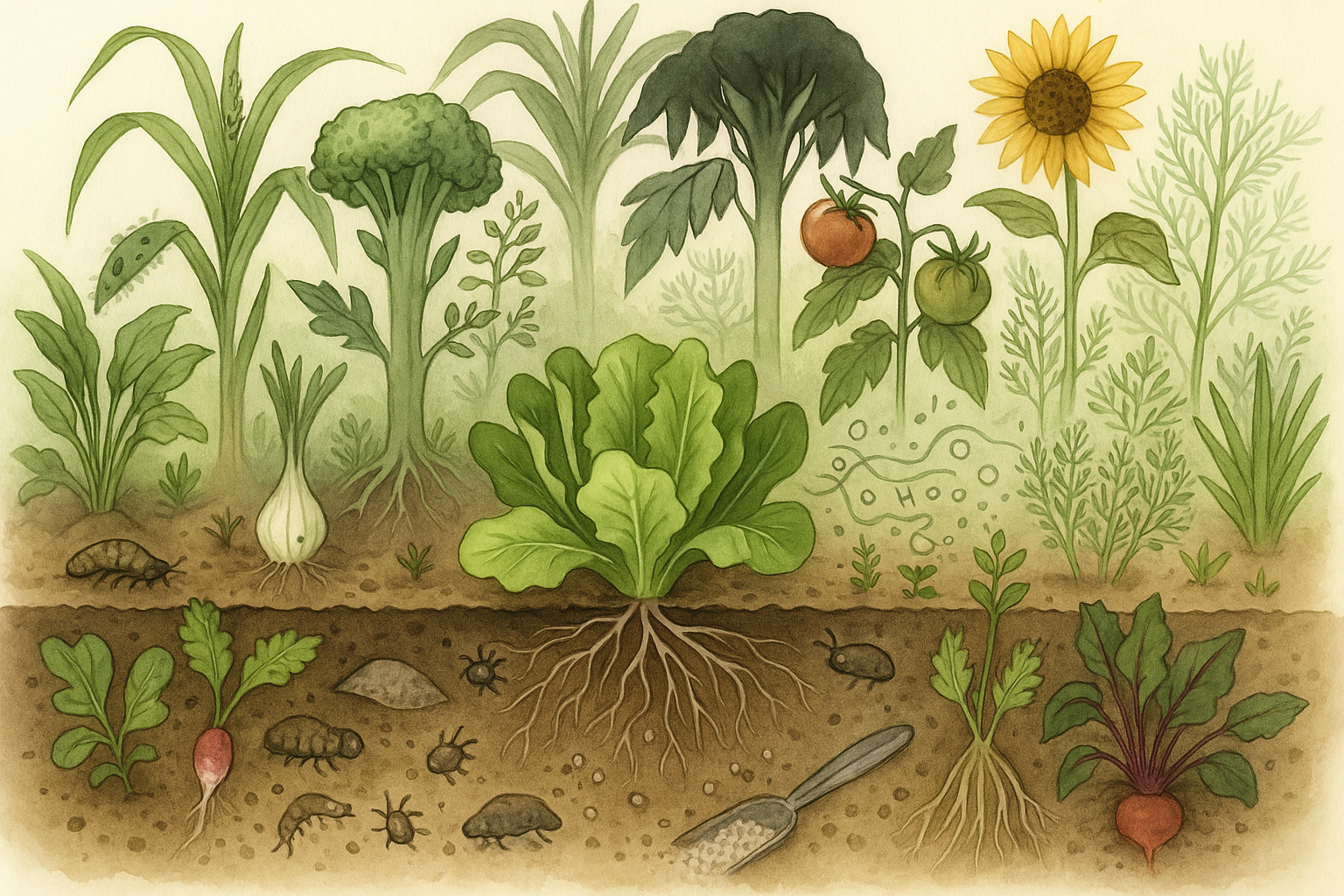
When planning a thriving lettuce patch, it’s essential to know that not all plants play nicely together. Scientific research points to several reasons why poor companions can hinder lettuce growth, including allelopathy—where certain plants, like fennel, release chemicals into the soil that stunt lettuce’s root development and nutrient uptake.
Resource competition is another major factor; crops like broccoli or cauliflower with fast-growing, dense root systems can quickly outcompete lettuce for water and nutrients, leaving the leaves small and flavorless. Shading is also a common issue, especially if you plant tall tomatoes nearby; these towering neighbors can block sunlight, causing lettuce to grow leggy and weak.
Then there’s the risk of increased pest or disease spread: planting lettuce next to corn may attract aphids or fungal diseases that thrive in the humid microclimate created by the corn’s dense canopy. Imagine sowing lettuce under sunflowers—your salad greens might become bitter and stressed as they stretch for light that never comes. Or placing lettuce by garlic could affect its growth since garlic has strong allelopathic properties.
If you notice your lettuce looking stunted or yellowing, evaluate the plant neighbors and spacing. Try relocating problem plants, increasing airflow, or switching to proven companion options like carrots or radishes. Keeping a simple garden diary to track what’s thriving (and what’s not) each season can also help you spot bad combos early and tweak your plan for next year.
Better Alternatives
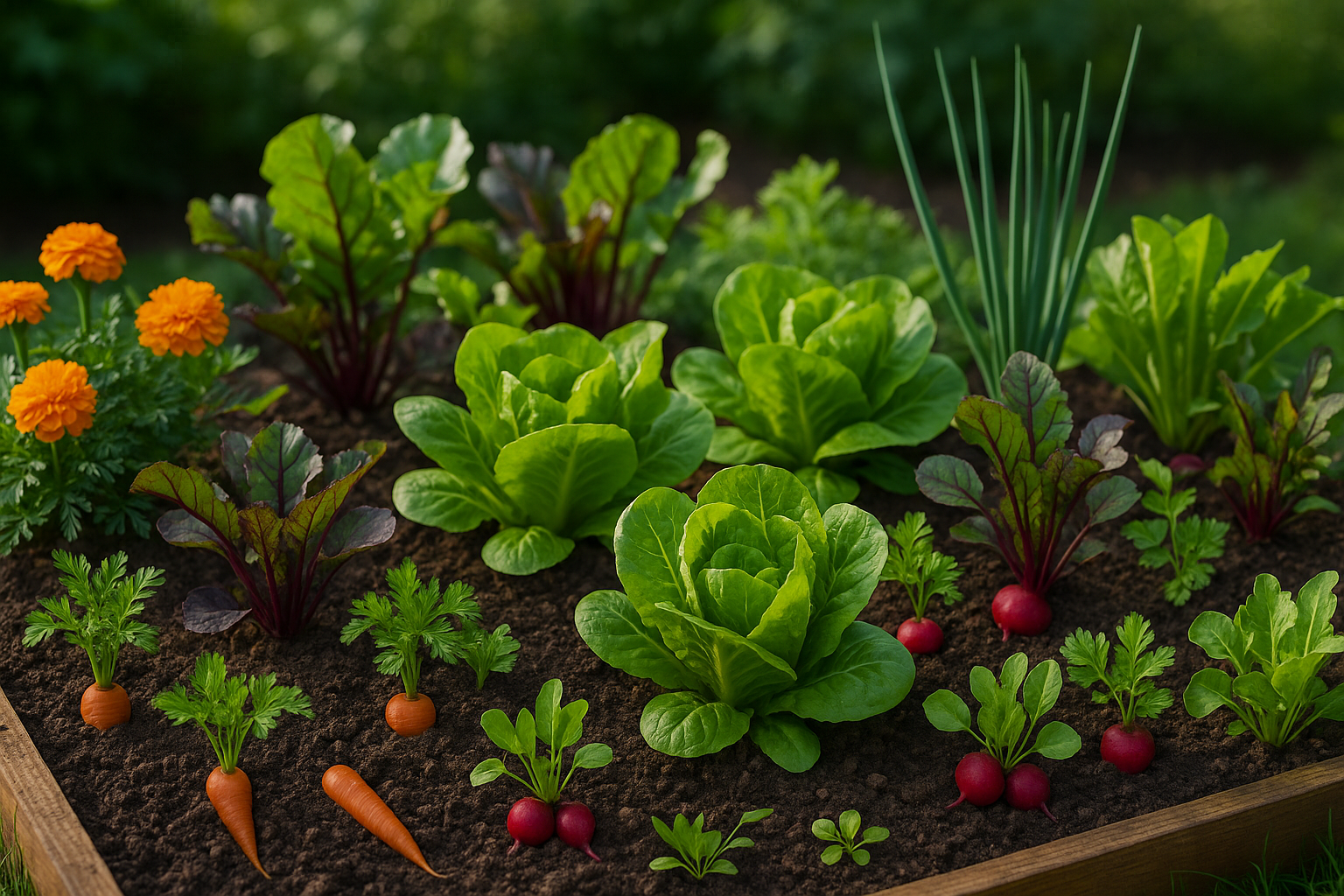
When planning your vegetable garden, pairing lettuce with the right neighbors can make a real difference in both yield and quality. Carrots and beets thrive alongside lettuce because their roots grow deeper, which means they don’t crowd out the shallow roots of your salad greens—they draw nutrients from different layers, allowing both crops to flourish without competing.
Onions and chives are not just space-saving; these pungent companions also help repel aphids and other pests naturally, reducing your need for chemical interventions. To take pest control a step further, plant marigolds in and around your lettuce beds. Marigolds release a scent that deters nematodes and beetles, plus their bright blooms add a cheerful pop of color among the greens.
Radishes act as a living marker for lettuce rows since they sprout quickly, making it easy to track slow-germinating lettuce seeds. As a bonus, harvesting radishes early gives extra growing space for your lettuce to mature.
For layout, stagger your plantings: try alternating rows of lettuce with carrots or beets, or place a border of marigolds or chives around your greens. This not only maximizes the benefits of pest prevention but also ensures each plant gets adequate sunlight and airflow—key for preventing mildews and rot.
Rotate your plant families each season, if possible, to keep soil healthy and reduce the risk of disease buildup. By mixing these smart partners together, you’ll see better growth, tastier leaves, and fewer pest problems—all without sacrificing space or adding lots of effort, making your lettuce patch more productive and vibrant all season long.
Conclusion & Quick Reference Chart
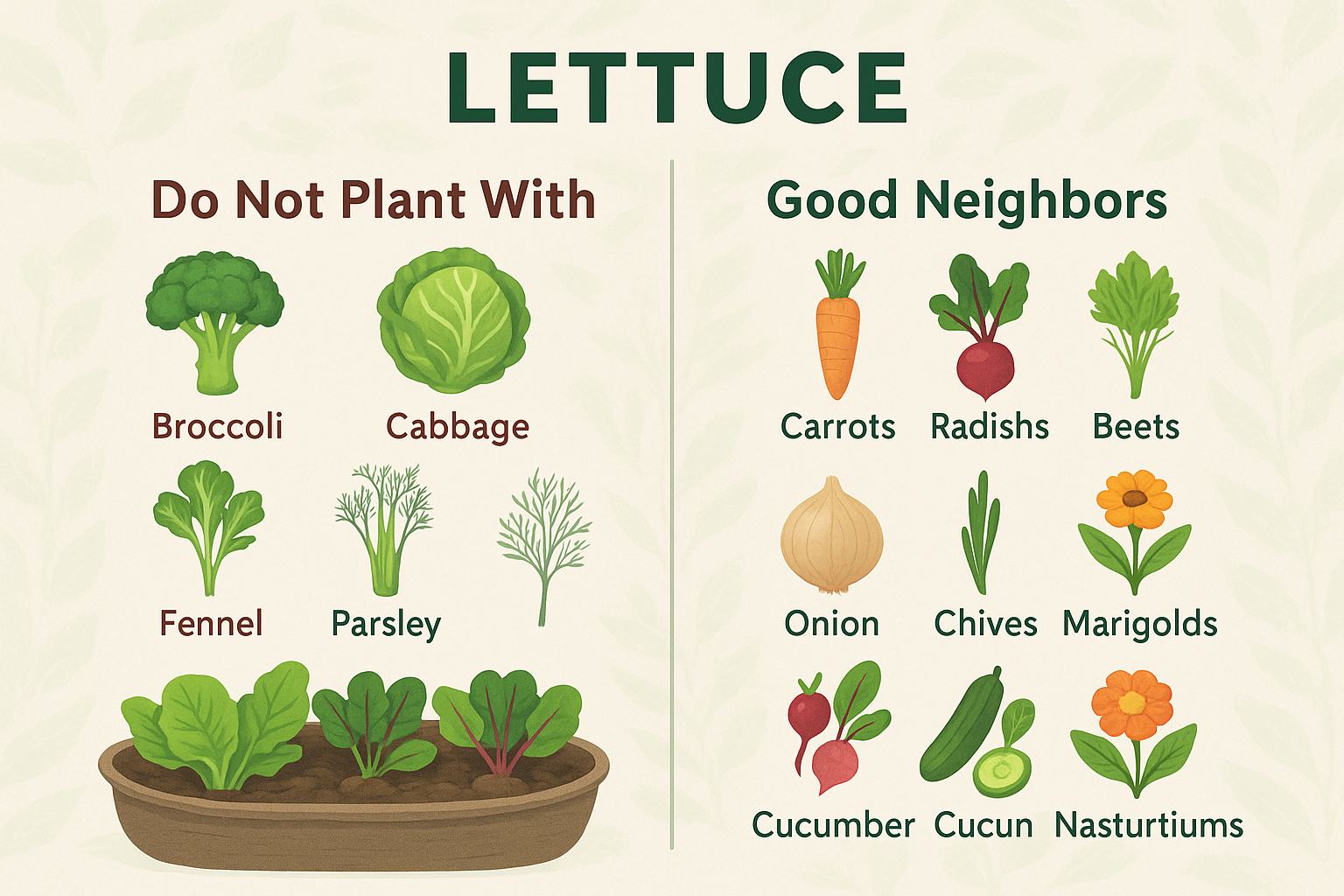
Choosing the right companions for your lettuce can make a noticeable difference in your harvest. Avoid planting lettuce near broccoli, cabbage, Brussels sprouts, or parsley, as these can compete for nutrients or attract pests that harm lettuce. Instead, look for friendly neighbors like carrots, radishes, beets, onions, and marigolds. These plants promote healthy growth, deter pests, and improve air circulation.
Trying companion planting isn’t complicated: even on a small balcony, placing pots of lettuce next to carrots or chives can help. Experiment with combinations to see what works best in your garden.
Here’s a quick reference chart for your next planting:
- Do Not Plant With: broccoli, cabbage, Brussels sprouts, fennel, parsley
- Good Neighbors: carrots, radishes, beets, onions, chives, marigolds, cucumbers, nasturtiums
With these easy swaps, you’ll enjoy a more resilient and productive lettuce crop while fostering a healthier, more diverse garden ecosystem.
